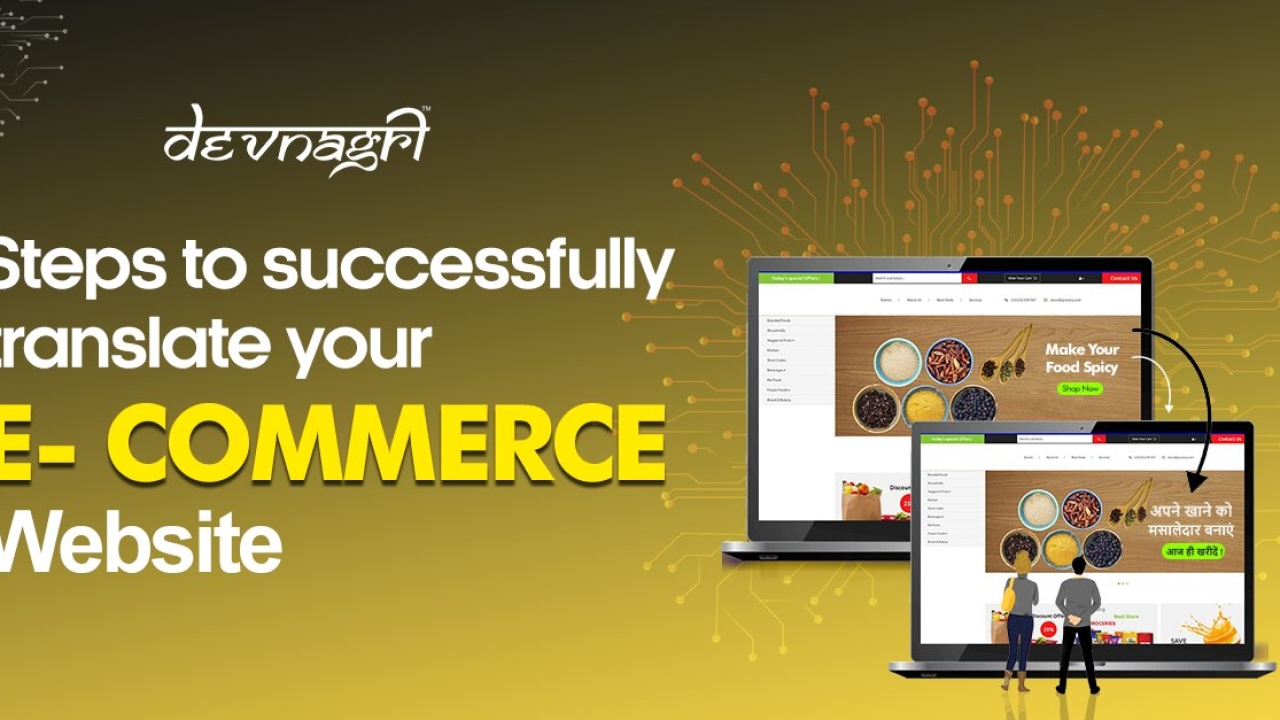Steps to successfully translate your eCommerce website
Posted on 19 September, 2022 by Devnagri

Your eCommerce site’s ability to draw in potential customers is vital in today’s world. Most people consider website visits as their first point of contact with your business. According to recent statistics, a significant amount of purchases are coming from non-English speakers. Hence, invest in eCommerce translation to secure sales, and nurture your relationship with your customers.
Telugu is a widely spoken language in India, and most native Telugu speakers reside in the southern parts of the country. Since a sizable portion of the population is Telugu speakers, the demand for English to Telugu translation has increased. So many eCommerce companies have included English to Telugu translation in their websites to better address and communicate with native speakers.
One way to provide a pleasant experience for your clients is to translate your website into various languages, making your website more accessible because 88% of customers do not return to make purchases after having an unpleasant experience.
Today, we will discuss distinct steps to help you efficiently translate your eCommerce website.
Decide where to sell:
Your first step to successful online website translation is selecting the right countries. Ask yourself these questions.
- Is there a market for my products in this country?
- Are there tariffs and taxes that can make my selling impractical in the country?
- Are there any cultural taboos that my product may violate?
- Are there governmental restrictions in the country that may make it difficult for clients to reach my site?
Once you know where you can sell your products, choose languages.
Language:
Offering customers options is a great way to start a relationship and makes them feel comfortable. When a customer first visits your website, give a choice of languages, using cookies to remember their preference.
Professional translators are the only solution to achieve high-quality copy for your website. An expert understands the nuances of the original language and can contextualize them during translation.
Also Read: 3 Reasons Why You Need Language Translation To Grow Your Business
Localization VS translation:
Creating a multilingual copy of your eCommerce store aids you beyond translation. Your multilingual website will bring in visitors from different cultures and countries. You need to build a relationship with them via words, images, and other elements on your website.
Localization builds a connection with your clients. With translation, you can also represent a culture through images, translating product names & description information in your native language.
Also Read: 12 Most Spoken Languages in India by Number of Speakers
Design:
Successful localization begins with designing your website. Design your site with localization in mind to easily accommodate new languages and visual norms.
Some languages take more space on the page than English, which can impact your layout. To assess the impact, analyze how your eCommerce website appears in target regions and compare it to your current design.
Also Read: Five Reasons Why You Need App Localization?
Plan the content to translate:
Having a plan for the translation content sections is essential. You can start by listing out the products to translate. The list can include the products you can sell to the target area from a cultural and legal perspective. You may also need to get approvals for some products before selling them in certain countries.
Check for approvals beforehand to avoid any issues in the future.
Apart from products, you also need to translate terms & conditions, policies, and emails customers receive after placing the order, such as order details, order confirmation, order tracking, and promotional emails you may send later.
Also Read: Is Website Localization Important For Edtech Companies In India?
SEO localization:
Prepare a list of keywords crucial to generating traffic to the different versions of your website. Translate the keywords accurately to the target languages based on search volume. Also, translate your meta description and titles creatively, which can attract more clicks.
Choose a translation software:
Choose a translation software that supports your target languages, integrates with your CMS, and streamlines the translation process.
Software that does not support your languages leads you to do lots of work to change the translated website.
The translation software that integrates with your content management system (CMS) helps you manage the translation process.
Also Read: Why Is The Banking Sector Availing English To Hindi Translation Solutions?
Hire a specialized translation agency:
As you have seen above, there are many things in translating your eCommerce website. Working with a translation agency that understands how to manage all things is pivotal for your business.
Ensure to do thorough research before hiring your translation agency.
- Ask about the qualifications of the translators.
- Are they native speakers?
- Did they receive training?
- Do they have prior experience in the field?
- How many successful projects have the translators had?
Asking these questions gives you an idea about the agency and whether they are best for your eCommerce business.
There are many challenges when aiming for accurate translation for your eCommerce website. Thanks to modern technology, now you can efficiently make English to Telugu translations for any document and reach a wider audience. Having English to Telugu translation ensures proper communication with Telugu speakers.
Source: https://devnagri.com/steps-to-successfully-translate-your-ecommerce-website/